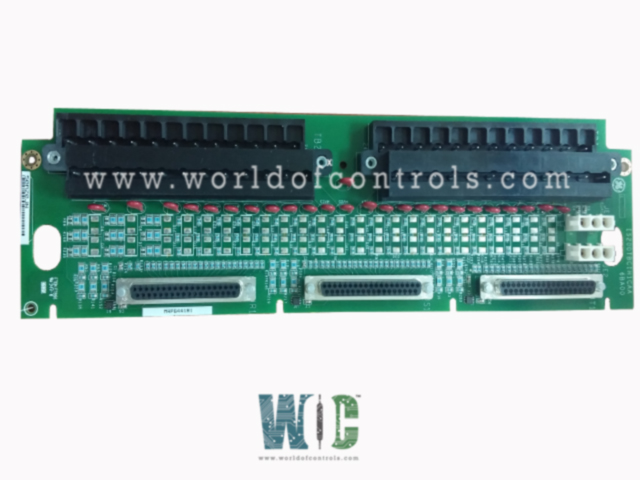
World Of Controls understands the criticality of your requirement and works towards reducing the lead time as much as possible.
IS200TBCIH1CA - Contact Input Group Isolation Terminal Board is available in stock which ships the same day.
IS200TBCIH1CA - Contact Input Group Isolation Terminal Board comes in UNUSED as well as REBUILT condition.
To avail our best deals for IS200TBCIH1CA - Contact Input Group Isolation Terminal Board, contact us and we will get back to you within 24 hours.
SPECIFICATIONS:
Part Number: IS200TBCIH1CA
Manufacturer: General Electric
Series: Mark VIe
Product Type: Contact Input Group Isolation Terminal Board
Number of Channels: 24
Input Current: 124 V dc
Power supply voltage: 28 V dc
Voltage Range: 14 to 32 V dc
LVDT excitation output: 3.2 ±0.2 kHz
Mounting: DIN-rail mounting
Technology: Surface mount
Operating temperature: -30 to 65°C
Size: 33.02 cm high x 10.16 cm
Repair: 3-7 Day
Availability: In Stock
Weight: 2 lbs
Country of Origin: United States
Manual: GEH-6721D
FUNCTIONAL DESCRIPTION:
IS200TBCIH1CA is a Contact Input Group Isolation Terminal Board manufactured and designed by General Electric as part of the Mark VIe Series used in GE Distributed Control Systems. The contact input terminal board (TBCI) accepts 24 dry contact inputs wired to two barrier-type terminal blocks. DC power is wired into TBCI for contact excitation. The contact inputs have noise suppression circuitry to protect against surge and high-frequency noise. In the Mark VIe system, the PDIA I/O packs plug into the TBCI. One, two, or three PDIA packs support a variety of system configurations. Mark VIe requires the C version of this board for correct mechanical alignment of connector JT1 with I/O pack mechanical support.
INSTALLATION:
The 24 dry contact inputs are wired directly to two I/O terminal blocks mounted on the terminal board. These blocks are held down with two screws and can be unplugged from the board for maintenance. Each block has 24 terminals accepting up to #12 AWG wires. A shield terminal strip attached to the chassis ground is located immediately to the left of each terminal block. For a simplex system connector JR1 is used; for a TMR system, all three connectors are used. Cables or I/O packs are plugged in depending on the type of Mark VI or Mark VIe system, and the level of redundancy.
OPERATION:
Filters reduce high-frequency noise and suppress surge on each input near the point of signal entry. The dry contact inputs on H1 are powered from a floating 125 V dc (100-145 V dc) supply from the turbine control. The 125 V dc bus is currently limited in the power distribution module before feeding each contact input. H2 and H3 versions use lower voltages as shown in the specification table. The discrete input voltage signals pass to the I/O processor, which sends them through optical isolators providing group isolation and transferring the signals to the system controller. The reference voltage in the isolation circuits sets a transition threshold that is equal to 50% of the applied floating power supply voltage. The tracking is clamped to go no less than 13% of the nominal rated supply voltage to force all contacts to indicate open when the voltage dips below this level.
WOC has the largest stock of OEM replacement parts for GE Distributed Control Systems. We can also repair your faulty boards and supply unused and rebuilt boards backed up with a warranty. Our team of experts is available round the clock to support your OEM needs. Our team of experts at WOC is happy to assist you with any of your automation requirements. For pricing and availability on parts and repairs, kindly contact our team by phone or email.
What is a Contact Input Group Isolation Terminal Board?
A Contact Input Group Isolation Terminal Board is an electronic device used to interface multiple input signals from various sources. It provides electrical isolation and ensures safe and reliable signal transmission to a control system or data acquisition system.
Why is electrical isolation important in input terminal boards?
Electrical isolation is crucial because it prevents electrical noise, voltage spikes, and potential differences from affecting the control system. It ensures that signals are transmitted without interference, improving the accuracy and reliability of the system.
How does a Contact Input Group Isolation Terminal Board work?
This board works by receiving input signals from various devices and isolating them using opto-isolators, transformers, or other isolation techniques. The isolated signals are then transmitted to the control system or data acquisition system.